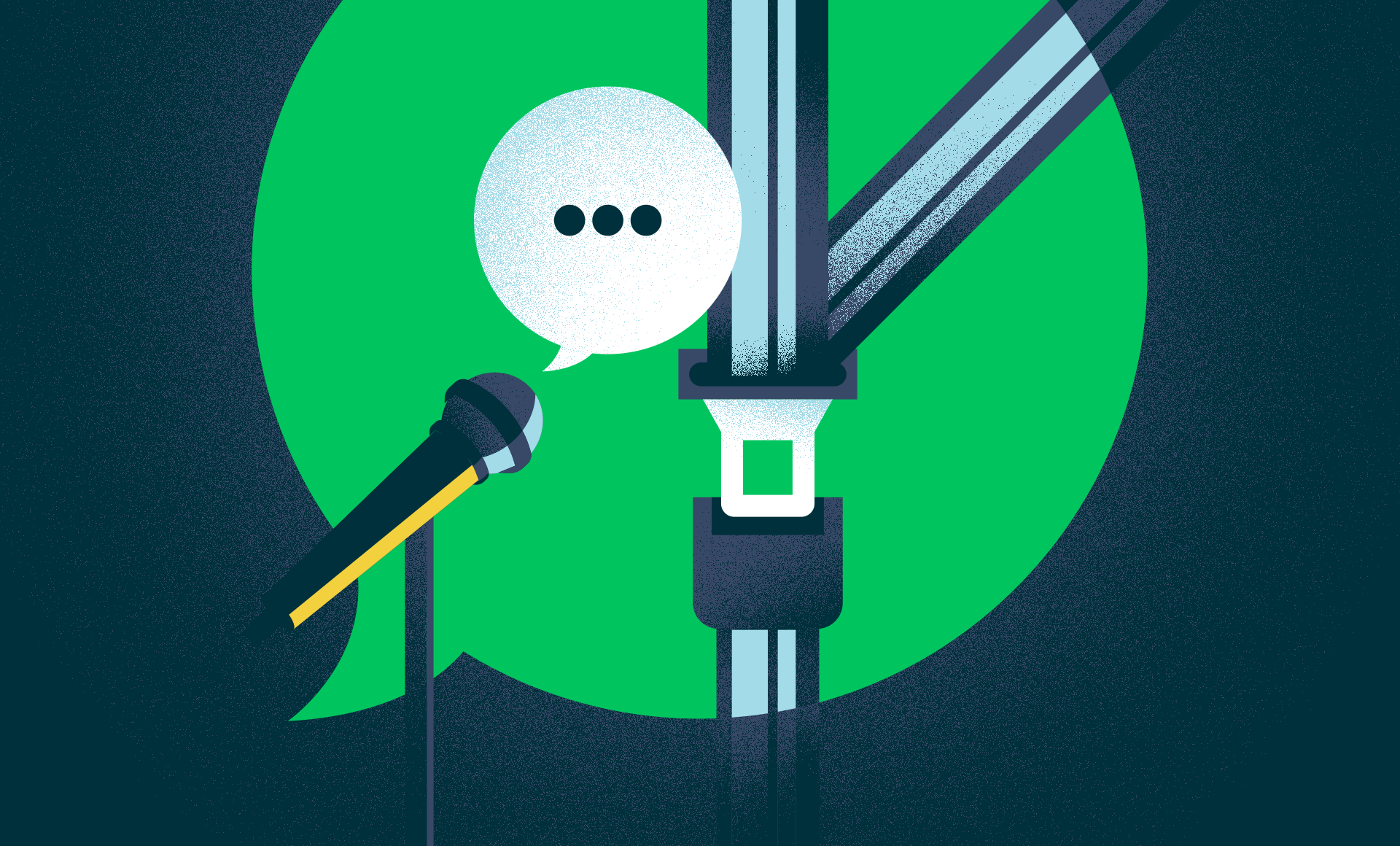Recently Brian Hwang, Intralinks’ Director of Product Marketing at SS&C Intralinks and Noah Waisberg, CEO at Kira Systems, co-hosted a panel of prominent M&A lawyers to discuss their points of view on traditional M&A due diligence practices and the accepted levels of associated risk, and the role that technology has played in changing the standard of how due diligence is conducted.
Waisberg led the discussion with Scott Barshay, Chair of the Paul, Weiss Corporate Department, Saee Muzumdar, Partner and Co-Chair of Gibson, Dunn & Crutcher LLP’s Mergers & Acquisitions Practice Group, and Stephen Kotran, Partner at Sullivan & Cromwell.
Four main themes emerged from the discussion:
Yes, Diligence Still Matters, But Each Deal is Unique and “Thought is Required” to Find the Right Balance
Waisberg began the discussion with a bit of a straw man: the several criticisms he sometimes hears about traditional due diligence practice:
- That clients are extremely cost sensitive, and aren’t willing to pay more than the minimum;
- That the time on most deals is too compressed to do anything but a quick review diligence materials;
- That clients will rarely not do a deal because of something that’s missed in due diligence; the worst case situation is that the client buys itself a litigation and it will work out most of the time;
- That most of the time is spent on evaluating the consequences of the transaction itself - like looking for change of control provisions. This could lead to clients not caring if these provisions are missed in a big contract; and
- Private Equity clients don’t care so much about diligence because their losses are typically limited to the amount of their investment.
Scott Barshay rejected the idea that diligence is a yes/no proposition: “There’s a difference between checking a few boxes and not really doing the work, and having every single person in your law firm looking at every single contract. Neither is good, but there is a happy medium and that depends on the client, the deal, the target - it depends on a lot of things that you have to work through. Diligence matters a lot.”
Saee Muzumdar agreed that all of the factors that Waisberg pointed to are relevant in the context of wanting value for money, but that the key is focusing on the specifics of the deal. “It’s about focusing on contextualizing them to the needs of the client. The whole point is to identify issues that you can mitigate through the contract or through mitigation strategies and integration.”
Barshay gave some examples of types of diligence that have evolved over time. Clients used to be very worried about environmental liability on a deal, and with some exceptions that’s just not the concern it used to be. On the other hand, today he is doing more tech deals than ever; if you have a buyer with a big software offering and a target company that uses a lot of open source code, you might not do that deal if you don’t have a workaround. So that kind of diligence has become more important.
Another example from the tech world is around licensing. If the buyer makes its money through patent licensing, and the target company has upstream affiliate provisions in its license agreements, the buyer may have to decide whether it will forgo the revenue stream generated by existing patent licenses in its portfolios, or not pursue the transaction.
In short, diligence is less about routine contract reviews and more about the specifics of the deal, and understanding the business issues involved. “Thought is required,” as Barshay put it. “It’s our job as partners leading the deal to be interfacing with our clients, understand what is important and requires a full court press, and what requires much more of an overview. If we miss it, the buck stops with us.”
Technology Can Help Expand the Scope and Value of Due Diligence
Muzumdar pointed out the ways that technology is changing due diligence. “It feels like technology is an area that could enable greater access, or greater ability to do more due diligence, in much the same way that, 30 years ago, the new document review platforms started to change the way that litigators did discovery. Instead of having to look at every single piece of paper in discovery, you run them through a tool that’s going to spit out all the answers based on keyword search. That didn’t reduce the role of lawyers in discovery, it just expanded the amount of discovery that could be done. It hasn’t changed or taken away from the role of lawyers.”
Muzumdar and her firm are always looking around the corner for ways to apply technology, she said, and “Diligence sometimes seems like an obvious area, whether to streamline the work we are doing, or expand the work we are doing, or even as a way to QC the work we’re doing.”
Barshay put technology in the context of the client relationship. “Look, our job is to help our clients, to get their deals done in an effective way, in the right way, in a way that protects them. That’s why we do the diligence. AI helps us do that, right? It helps us do it way more today than it did 10 years ago, and it’s going to help us way more 10 years from now than it does today, but it is a very, very valuable tool today.”
He continued, “AI allows us to get the work done for our client more cheaply. That’s a good thing, it’s good for things that are less important, that the clients care about but want us to spend less time on. And on the stuff that’s really important, AI is a check on human beings… Having an efficient, inexpensive check on us - even if it’s not perfect - is a really, really important thing for doing a good job for our clients.”
Using AI to Help Clients Plan for Downstream Integration
Stephen Kotran added that diligence often comes into play on the front end of a deal, when the client is still deciding whether to go ahead with a deal. But it’s important to remember how important AI can be in extracting data from contracts further down the road.
“The decision to walk away from a deal or not is a big one. But once they start down the path, you know getting the contract signed is just the beginning for them. They then have an integration phase, and then they have an ongoing management phase and you know, just running the businesses combined and keeping track of these things.”
In contract diligence, he noted, “maybe not every contract is material and not every provision matters, in terms of deciding to do the deal and even the price. But boy, that’s going to really matter to the inside legal group down the road as they go to integrate. What if there are overlapping contracts? What are the costs of terminating those things and what will be the cost of contract management down the road?”
Full diligence, said Kotran, is part of a lifecycle that supports the future operation of the merged company. “AI is going to play a bigger and bigger role in that, and increasingly clients are thinking about that at the front end when they ask their outside law firm in partnership to do diligence with them. They’re already looking down the road to the transition into the integration and ongoing management of the combined company.”
That position resulted in one of the few disagreements on this panel. Barshay cautioned against jumping the gun and mixing integration work into the diligence phase. He noted that one of the biggest problems in a deal is that most are confidential, and target companies don’t want to unnecessarily involve the people who have access to a lot of the important information, due to the risk of a leak. “So I generally tell my buyer, ‘I’ll get you what you need to understand the risk if you buy this company, and the value of the company.’” He strongly discourages clients from using diligence to start on the integration issues, because what you gain on the integration side might limit access to the information about risk and value you really care about.
Kotran conceded that this may just be a matter of timing - that the issue of leaking the deal is over as soon as the documents are signed, and that integration work can begin immediately - but it’s all part of a continuum of service to the client, and that AI technology can be a great help at that point.
The Ultimate Value of Diligence: Focus on The Things that Affect the Revenue Model
A questioner listening to the panel asked, “is the most important question in diligence proving the deal hypothesis and validating the business reason to do the deal?”
This led to an interesting discussion of the boundaries of what’s strictly legal diligence, as opposed to other forms of business diligence. Kotran acknowledged that “fundamentally, many parties think the non-legal diligence, the business diligence, financial diligence, and accounting is more important than the legal, which might be true in some cases.“
A strategic buyer or a PE investor will have a financial model of the deal, and what they are really looking at is the revenue model, since most businesses are sold on multiples. So EBITDA, cash flows, recurring earnings are all part of this calculation. “A lot of people look at legal diligence and think what we are really looking for is contingent liability, which can be bad as a one time hit to the balance sheet, a disappointment, but it doesn’t fundamentally change the model about the earnings machine.” The bankers and financial people may see a non-recurring risk, and think, “who cares?” So Kotran’s advice was to target diligence on those things that can actually affect ongoing revenue generation.
Barshay noted the importance of building relationships with the parties in that kind of diligence inquiry. “As I said before, diligence is all about risk and value - and that value lies in the revenue stream. You know, every single deal is different. Steve twice brought up the importance of staring the other side in the eye.” During the pandemic he noted, management presentations were among the only human contact he had. “That is because most buyers correctly feel they have to look the management team in the eye and hear what they are saying and how they say it. That to me is probably more important than everything else.”
This last thought was also echoed earlier by Muzumdar, when she said that, in diligence, “you have to have the right set of eyes looking at the documents, to truly understand and help contextualize what the issues are. There’s a point of view for every document in the data room.”
In the end, the discussion spent a good deal of time talking about AI and leveraging technology in due diligence, but the conversation kept coming back to the human contributions to the diligence process: understanding the client’s needs, communicating around what’s important, and taking multiple business perspectives into account beyond the strictly legal issues.



